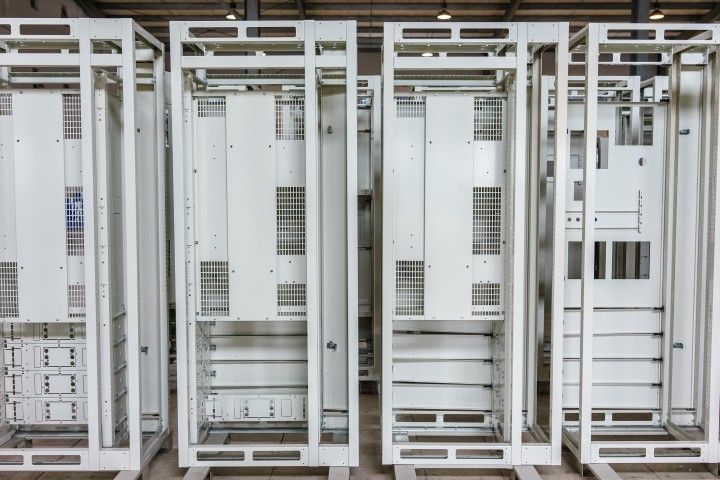IEC 62208 STANDARD
(Empty Enclosures for Low Voltage Switchgear and Controlgear - General Requirements)
Since the thought that the housings should be periodically maintained by experts, regulations; The technical procedures of the manufacturers of these products clearly state the conditions required to ensure that foreign elements and fluids are carried out without entering, in TS EN 62208. TS EN 62208; It covers the empty enclosures provided by the user by the enclosure manufacturer before installing switching and control components by the user. According to the TS EN 62208 standard, all tests applied to empty housings are called “Type Tests” or “Type Tests”.
What are these types of tests?
Type testing is all of the tests carried out in accordance with this standard. Unless there is a different declaration, type tests should be carried out at an ambient temperature between + 10 ° C and + 40 ° C.
The enclosures tested should be delivered ready and suitable for normal use by the enclosure manufacturer.
Type tests for TS EN 62208 standard are listed below.
- Marking
- Static Loads
- Lifting
- Axial loads of metal inserts
- Degree of protection against external mechanical impacts (IK code)
- IP Test(IP Code)
- Thermal stability
- Resistance to normal heat
- Resistance to abnormal heat and to fire
- Dielectric strength
- Continuity of the protective circuit
- Resistance to ultra-violet (UV) radiation
- Resistance to corrosion
- Thermal power dissipation capability
1.Marking Test:
This test is carried out by hand rubbing with a cloth soaked in water for 15 seconds and then with a cloth soaked in petroleum ether for 15 seconds.
2.Static Loads Test:
The test specimen is loaded with an evenly distributed load of 1.25 times the rating specified by the manufacturer. Mechanical performance is observed according to TS EN 62208 standard.
3.Lifting:
The tests required by the TS EN 62208 standard are carried out by lifting the loaded test sample to a height of 1 m or more, as in the static loads test.
4.Axial Loads for Metal Inserts:
The mounting plate is applied to all types of housing that are studded with threaded metal inserts to hold the switching device and control device carriers in position. This type of test should be done by applying an axial load for 10 seconds.
5.Degree of Protection Against External Mechanical Impacts (IK Code):
The test is applied 3 times for samples exposed to normal use and whose width is not more than 1 meter, 5 times for otherwise. Sample must provide the IP code and dielectric strength of the enclosure after the test.
6.Degree of Protection (IP Code):
The sample is defined for a specific IP code according to the fulfillment requirements of the TS EN 60529 standard.
7.Thermal Stability Test:
Type test test is carried out in accordance with the IEC 60068-2-2 standard at a temperature of 70 ° C with natural air circulation for 168 hours.
8.Resistance to Normal Heat:
The suitability of insulating materials in terms of resistance to heat effects is realized by taking the IEC 60085 standard into consideration.
9.Resistance to Abnormal Heat and to Fire:
The sample temperature taken in accordance with the standard is kept in an atmosphere between 15 ° C and 35 ° and the relative humidity between 35% and 45% for 24 hours. Then, the glow wire test is carried out at the temperature specified by the standard according to the usage area of the sample.
10.Dielectric Strength Test:
The enclosures are placed for 48 hours in a humidity cabinet with relative humidity between 91% and 95% and containing air at 40 ° C ± 2 ° C. All metal sections on the inner side of the sample are connected to a busbar and the tension, the effective value of which is selected from the IEC 61439-1 standard, is applied for one minute between two metal sheets, one in contact with the outer surface, the other at the border of the protected area. No discharge should occur during the test.
11.Continuity of the Protective Circuit Test:
It must be verified that the protection circuit of the different exposed conductive parts of the housing is effectively connected to the grounding terminal or contact, and the circuit resistance does not exceed 0.1Ω.
12.Resistance to Ultra-Violet (UV) Radiation Test:
In enclosures made of insulating materials, compliance with this rule should be checked by verifying that the bending strength of the insulating materials and the holding level of the Charpy impact are at least 70%.
13.Resistance to Corrosion Test:
Test applications vary according to the properties and application areas of the sample. At the end of the experiment, the mechanical parts of the sample should not be damaged, the gaskets should not be damaged and the doors, hinges, locks and fasteners should work without any extraordinary effort.
14.Thermal Power Dissipation Capability Test:
The data of thermal power discharge capacities provided by the manufacturer should be determined by an test made in accordance with the IEC 61439-1 standard or by a calculation method according to IEC / TR60890.

